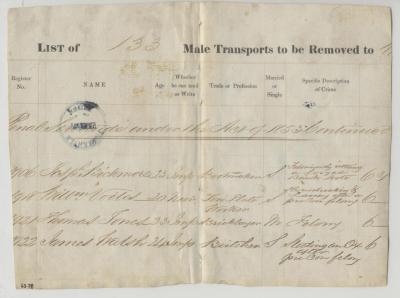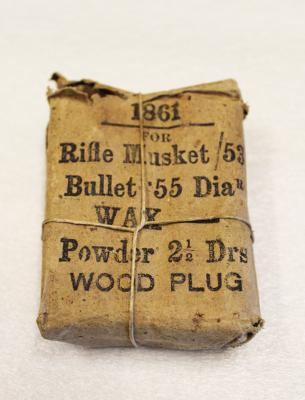BOOK PHARMACOPOEIA
1854Hardback, leather bound, printed second edition of Translation of the New London Pharmacopoeia, by J. Birbank Nevins M.D., published by Longman in 1854.
(a) Large, red-brown leather, hardback, rectangular book, consisting of 880 yellowed paper pages. Title embossed on spine in gold lettering, 'NEW/ LONDON PHARMACOPIA'. Authored by J. Birbank Nevins M.D. London. The book is a Second Edition, published in London by Longman, Brown, Green & Longmans in 1854.
(b) Detached page from Pharmacopeia, on yellowed paper. Printed in black ink on the top of the page, 'By the same Author,/ In 18mo. Roan limp, price 6s. 6d.,/ THE PRESCRIBER'S COMPLETE HAND-BOOK,/ Being a Translation, with Notes, of/ L'ART DE FORMULER,/ By MM. TROUSSEAU and REVEIL'.
(c) Detached four pages of Pharmacopeia, including title page, on yellowed paper. Pages still attached to eachother along spine. Printed in black ink, the title page reads 'A/ TRANSLATION/ OF THE/ NEW LONDON PHARMACOPEIA/ INCLUDING ALSO/ THE NEW DUBLIN AND EDINBURGH/ PHARMACOPOEIAS/ WITH A FULL ACCOUNT OF THE CHEMICAL AND MEDICAL/ PROPERTIES OF THEIR CONTENTS/ FORMING A/ COMPLETE MATERIA MEDICA/ BY/ J. BIRKBECK NEVINS, M.D. LOND.' Handwritten in black ink down the spine of the title page, 'Infirmary Convict Establishment / received per Ship Braide 31st July 1862'.
(d) Detached double page of Pharmacopeia, on yellowed paper. Printing on both sides. Title on second page printed in black ink, reads, 'PREFACE/ TO/ SECOND EDITION.'
(e) Detached single page of Pharmacopeia, on yellowed paper. Printing on both sides, pages numbered xi and xii.
Provenanced to Fremantle Prison. Handwritten in black ink on the title page is a note, linking this object to the Prison's hospital in 1862. It reads, “Infirmary Convict Establishment / received per Ship Braide 31st July 1862”.
Details
Details
The hospital at Fremantle Prison was built between 1857 and 1859. When completed the hospital had the following capacity; a general ward for 33 patients; a ward each to treat fever and ophthalmic diseases, equipped for 10 patients each; four observation wards, each with a single bed; and two cutaneous wards with three beds for patients with skin complaints. There was also a kitchen, bathroom, surgery and morgue on site.
The hospital was an essential part of the infrastructure at the Convict Establishment. There was a surgeon attached to the Prison, and a more senior staff surgeon who was the Principal Medical Officer in Perth. The Medical Officers were very aware of the ease with which any epidemic could decimate a prison population, so care was taken to prevent such an eventuality. Moreover, there were some diseases which were more prevalent among convicts in Western Australia, which required hospital treatment, such as ophthalmia, dysentery, tuberculosis and lunacy, for which a separate asylum was eventually built outside the Establishment.
Medical Officers and administrators at the Convict Establishment would likely have used this book in the treatment of convicts. Titled 'A Translation of the New London Pharmacopoeia including also The New Dublin and Edinburgh Pharmacopoeias, with a full account of the chemical & medicinal properties of their contents; forming a Complete Materia Medica', it was written by J. Birbank Nevins M.D. of London. This pharmacopeia includes instructions on the use of herbs and palliatives, as well as compounds of mercury and other minerals, splints and bandages. Surviving records written by the Medical Officers at the Convict Establishment show the limitations of what was available at the time to ease pain or to cure serious complaints from which the convicts suffered. This book is a second edition of this title, published in London by Longman, Brown, Green & Longmans, in 1854. It is a hardback leather-bound publication with 880 pages.
This book has high historic significance, stemming from its well-established provenance as a book used in the Convict Establishment hospital in the 1860s. As a rare example of medical treatments and understanding from the convict era, this artefact also has high social and scientific importance. As a rare example of knowledge used in the treatment of disease and injury at the Convict Establishment, this book is internationally significant as a direct link with the era from which Fremantle Prison’s gains its World Heritage listing.












